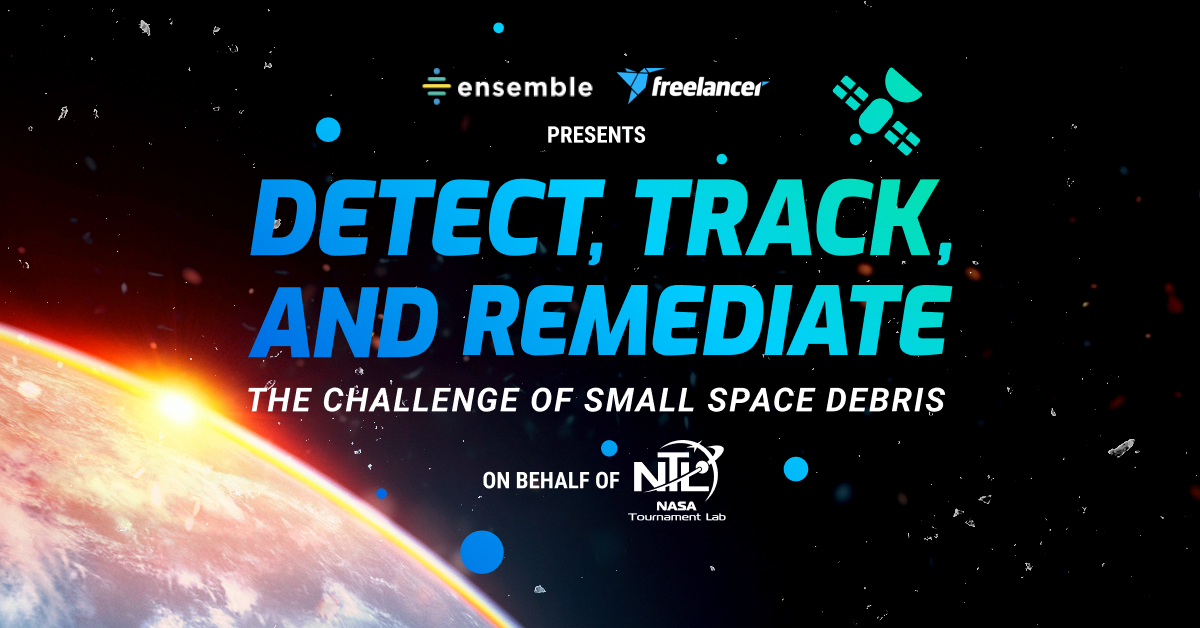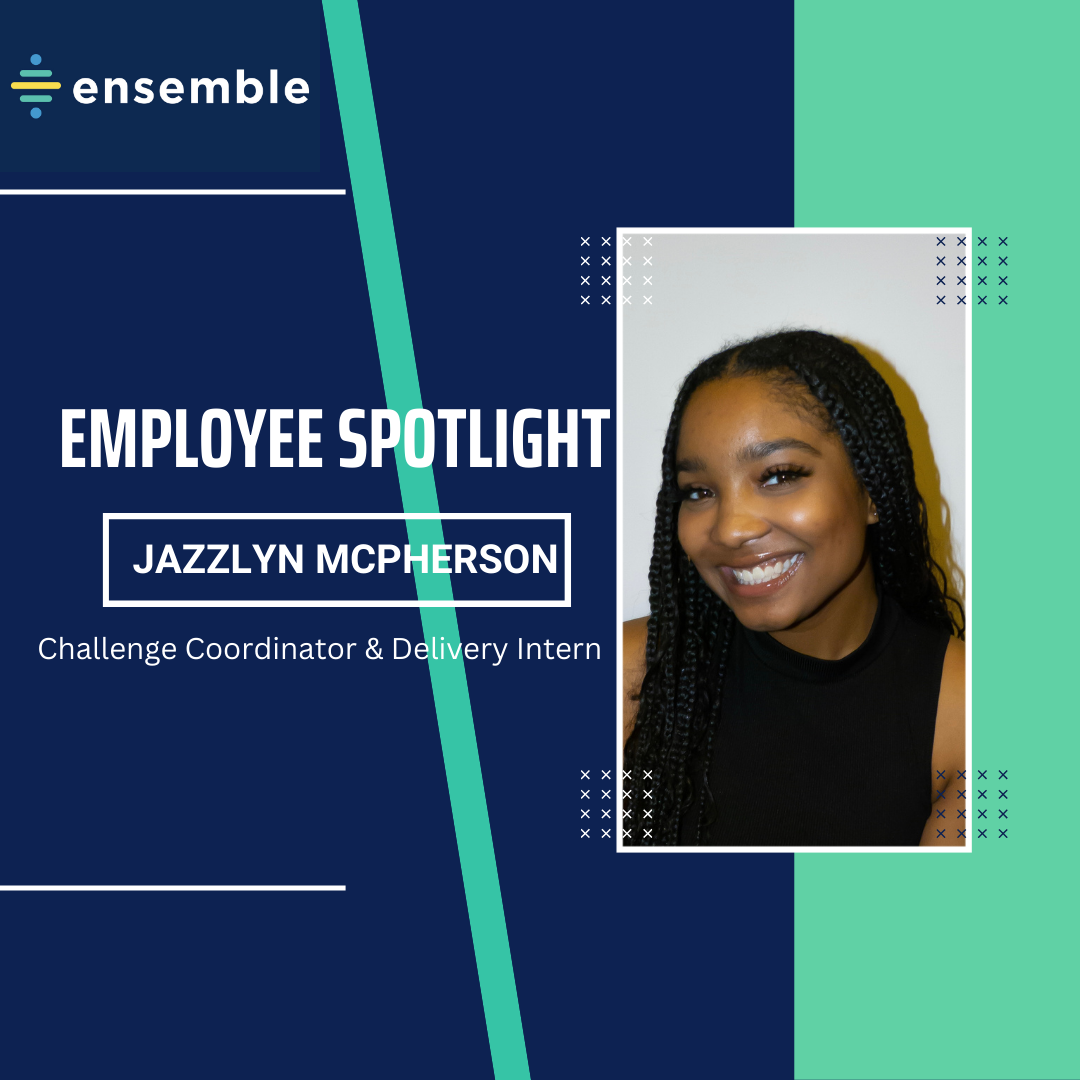Ensemble, in partnership with Freelancer, is thrilled to announce the winners of NASA’s “Detect, Track, and Remediate: The Challenge of Small Space Debris,” a global competition aimed at addressing the critical issue of small debris in Earth’s low-earth orbit (LEO) environment. Participants were challenged to propose scalable solutions for detecting, characterizing, tracking, and remediating debris ranging from 1mm to 10cm, aiming to enhance space safety and sustainability. Contestants submitted concept papers in one of the three prize categories (Detect & Characterize; Track; and Remediate) and competed for a share of the $120,000 prize purse.
Read more about our winners below!
Detect and Characterize Winners:
1st Place, Daniel Gebhardt: The Synchronous Correlated Imaging for Detection of Debris On-Orbit (SCIDDOO) concept detects and characterizes small space debris (SSD) in low-earth orbit (LEO). The core component of SCIDDOO is a constellation of optical imaging satellites in, or just above, LEO. Collected data is shared within the constellation to identify likely SSD objects and provide their characterization.
2nd Place, Christine Hartzell: This concept proposed to map small (mm to 10-cm scale) orbital debris about Earth using a fleet of smallsats equipped with sensors to detect the plasma signature of the debris.
3rd Place, Jesse Reynolds: The CODA (Characterizing Orbital Debris Affordably) mission concept proposes to employ a novel interferometric radar technique on a fleet of low-cost CubeSat buses to identify and characterize millions of millimetric debris in orbit.
4th Place, Richárd Ádám Vécsey: This concept is to detect small debris between 1 mm and 10 cm on the most crowded part of the Low Earth Orbit with MIMO-FMCW radar and fine tune the detection together with characterisation with the help of a visible range image, an infrared image and a spectrograph record.
5th Place, Nevin Thinagar: This concept proposes a laser beam-break array capable of detecting orbital debris as small as 0.1 cm that can be prototyped on a CubeSat platform.
Tracking Winners:
1st Place, Christophe Choquet: This concept is based on a pair of satellites equipped with cameras able to detect debris of up to magnitude 9
1st Place, Paolo Petrinca: ULTRAV is a Space Debris passive detector system able to detect and track space small orbiting objects with dimensions greater than 1 cm. The ULTRAV system is conceived to be installed on board of satellites (one or constellations) and is equipped with high-sensitive photon detectors that look toward the Earth, and is able to measure the ultraviolet radiation reflected by SD.
Remediation Winners:
1st Place, Dmitri Garin: This concept offers a novel design of a space sweeper: a deployable rotating tethered sweeper. Unlike previous designs with a single solid shield, the new design features a 1-degree sectoral shield of large radius constantly rotating around the mass center of the spacecraft-sweeper system.
2nd Place, Josep Rueda: This concept involves a design employing a swarm of small satellites, each fitted with a solar-pumped laser. These satellites would utilize laser ablation to individually target and decelerate space debris, lowering its altitude to facilitate safe absorption into the Earth’s atmosphere.
3rd Place, Jeffrey Morse: This concept offers a crossbow-like design to remediate small space debris (less than 10 cm in size) – Skimmer. Skimmer can use the orbital momentum of the orbital debris object itself, in conjunction with a solar powered crossbow inspired ejector. It can essentially skip across a set of similar orbits, cross-bowing the object into a new lower energy orbit (that should deorbit in 100-1000 days) while providing Skimmer a bit of DV to move to the next object capture.
4th Place, Kyran McDonnell: This concept is the deployment of 7 multipurpose satellites, equipped with a 50kW laser and magnetic contrast agent. Using an Aluminium Air Battery for energy, these satellites employ a unique remediation method involving impact capture, chemical reactions, and magnetic nanoparticles to analyze and manage debris composition, velocity, and orbit characteristics, complemented by machine-learning models for real-time tracking and prediction beyond sensor range.
Congratulations again to all of the winners for their innovative concepts. Learn more about opportunities to participate with NASA via prize competitions and challenges at: https://www.nasa.gov/solve. Additionally, learn more about Ensemble’s challenge service offerings here: https://ensembleconsultancy.com/services/prize-challenge-management/







